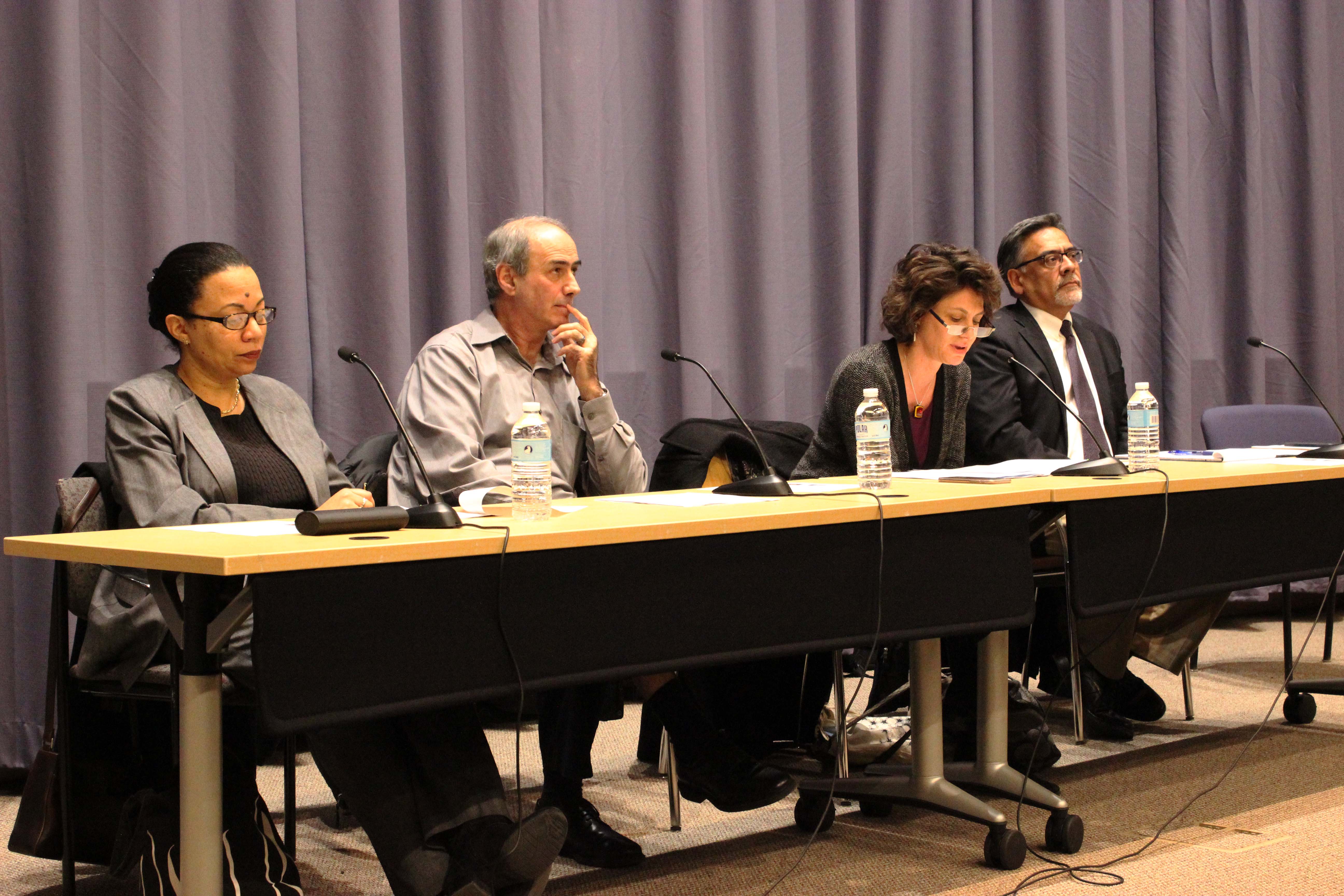
“Yale has problems, serious problems,” Deputy Provost for Faculty Development and Diversity Richard Bribiescas admitted at a Tuesday evening panel about faculty diversity at the University.
In light of recent campus controversies about racial justice and public calls for increased diversity among faculty and students, top administrators met with graduate students Tuesday to discuss the ways in which faculty members are hired, promoted and retained, particularly when it comes to building a diverse faculty. Around 150 students attended the panel discussion, titled “Building a Diverse Faculty: Recruitment, Tenure and Retention,” and attendees posed questions on topics ranging from the tenure-track system to diverse faculty-student mentorship to details of the recently announced $50 million faculty diversity initiative, which some have found confusing and opaque.
The trajectory of the discussion centered on two overarching questions regarding faculty diversity and the tenure system: how the tenure system is currently set up and how the system can be altered to improve the diversity of the Yale faculty.
“I was extremely impressed by the insight that the questions showed and the commitment by those in the room to what I think is a University-wide shared goal of getting a faculty that represents the full diversity of our nation and world,” Faculty of Arts and Sciences Dean Tamar Gendler said after the meeting. “I thought the tone in the room was respectfully challenging in exactly the way that is appropriate for an academic conversation.”
The panel consisted of Gendler, Bribiescas, FAS Dean of Academic Affairs John Dovidio and Associate Dean for Graduate Student Development and Diversity Michelle Nearon. The administrators gave attendees packets containing graphs and information about appointments, reviews and promotions in the FAS, as well as breakdowns of the FAS by race and gender. One graph indicated that the percentage of minority professors in the FAS ladder faculty has hovered around 21 percent for the last 10 years. Another graph showed that 70 percent of the 2015 FAS ladder faculty are white, compared to 79 percent in 2005 — a change that one attendee said was not significant. A third graph showed that in 2015, 29 percent of FAS ladder faculty members were women, compared to 25 percent in 2005.
Several attendees mentioned these graphs in their questions to the panel, asking why there has been little change in terms of faculty diversity.
“I want to hear from you why there are these atrocious numbers at Yale,” one graduate student inquired.
In response, Gendler noted that she and several other panelists have been in their current positions for only 18 months, and that some of their positions were created precisely because of these problematic statistics. She added that she hopes the numbers will be “very different” five years from now.
Several attendees also posed questions regarding the mentorship roles of diverse and underrepresented faculty members. They said that these faculty members often take on significant administrative and mentorship roles because there are fewer underrepresented faculty members than underrepresented students, and they questioned why these services were not weighed as heavily as research work during the tenure review process. The panel responded that this work is indeed taken into account during the tenure process.
Graduate students also expressed confusion surrounding the $50 million University-wide faculty diversity initiative announced in November, which administrators have said will go toward incentivizing Yale’s schools to hire more professors from historically underrepresented groups. One attendee noted that bringing more visiting scholars — one component of the announced initiative — will not solve systemic diversity issues in the ladder system.
Bribiescas responded that less than 20 percent of the $50 million will be used to fund visiting scholars. Instead, he said, the primary component of the initiative will go toward supporting tenure-track positions.
Chris Geissler GRD ’20, a member of the Graduate Student Assembly and the Graduate Employees and Students Organization, told the News that the GSA had spent a whole meeting trying to dissect the specifics of the initiative, adding that he wished that there were a clearer and more defined description of how it will be executed. Nevertheless, he said that the discussion and the information provided seem to be transparent and in good faith.
“I’m glad to see that there is a clear presentation of these numbers,” Geissler said. “The graphs are helpful but obscure a couple of points.”
A female graduate student in the Physics Department, who requested anonymity due to the sensitive and personal nature of the topic, said she attended the discussion because she was interested in what the concrete plan for the $50 million initiative would be. She said that the panel responded “quite coherently,” and added that while she does not feel out of place in a male-dominated STEM department, she feels that she does not have a female professor as a role model.
There are 28 new FAS ladder faculty members for the 2015–16 school year, including 13 women.
Correction, Jan. 27: A previous version of this article misstated the percentage of the $50 million that will be used to fund visiting scholars.







